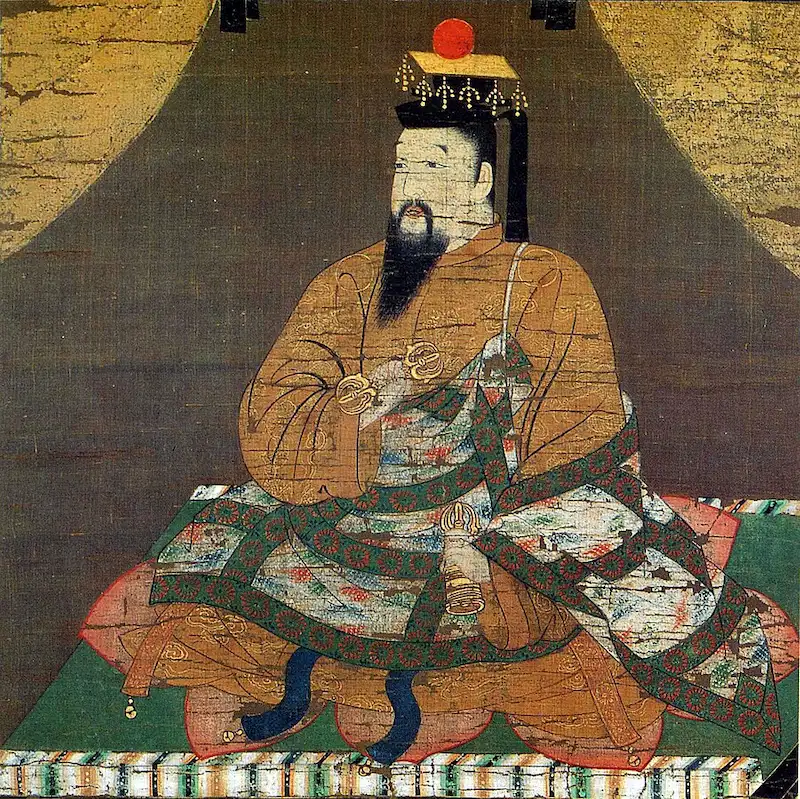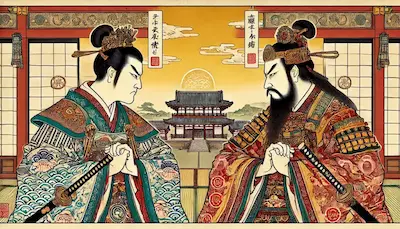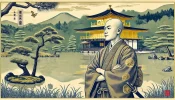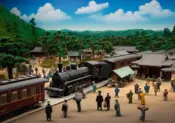Kyoto’s Nanboku-cho Period: A City Divided (1336-1392)
- Kyoto’s Nanboku-cho Period – A Tale of Two Courts
- The Kenmu Restoration and the Birth of the Nanboku-cho Period
- Kyoto in the Nanboku-cho Period: War and Transformation
- Nanboku-cho Culture: A Lasting Legacy in Kyoto
- Notable Nanboku-cho Period Sites in Kyoto
- The End of the Nanboku-cho Period and Its Aftermath
- Conclusion: The Legacy of Kyoto’s Nanboku-cho Period
Kyoto’s Nanboku-cho Period – A Tale of Two Courts
Step back in time to Kyoto’s Nanboku-cho period (1336-1392), an era marked by political turmoil and the division of Japan’s imperial court. This fascinating chapter in Kyoto’s history saw the city become a battleground for two rival emperors, each vying for control of the throne. In this article, we’ll delve into the events that led to this division, explore the impact on Kyoto’s landscape and culture, and uncover the lasting legacy of this turbulent time.
The Kenmu Restoration and the Birth of the Nanboku-cho Period

The Nanboku-cho period began with Emperor Go-Daigo’s ambitious Kenmu Restoration, aimed at restoring imperial power. However, his efforts were met with resistance from the powerful samurai Ashikaga Takauji, who eventually established a rival emperor in Kyoto. This marked the beginning of a 56-year period of conflict between the Southern Court (loyal to Go-Daigo) based in Yoshino and the Northern Court (backed by Takauji) in Kyoto.
Kyoto in the Nanboku-cho Period: War and Transformation
Kyoto, the traditional seat of imperial power, became a focal point of the conflict. The city witnessed numerous battles and power struggles, leaving a lasting impact on its landscape and infrastructure. The Ashikaga shogunate, established by Takauji, eventually gained control of Kyoto, further solidifying the Northern Court’s dominance. However, the Southern Court continued to resist, leading to ongoing instability and sporadic outbreaks of violence.
Nanboku-cho Culture: A Lasting Legacy in Kyoto
Despite the turmoil, the Nanboku-cho period was a time of cultural flourishing in Kyoto. The city became a melting pot of artistic and intellectual activity, with both courts patronizing various forms of art, literature, and religion. This cultural exchange left a lasting legacy on Kyoto, evident in the city’s temples, gardens, and traditional arts.
Notable Nanboku-cho Period Sites in Kyoto


Kyoto is home to several temples and structures that offer a glimpse into the Nanboku-cho period:
- Myoshin-ji Temple: This large Zen temple complex was founded in 1339 by Emperor Hanazono, who had abdicated in favor of Go-Daigo. It served as a center of Zen Buddhism during the Nanboku-cho period.
- Tenryu-ji Temple: This Zen temple was founded in 1339 by Ashikaga Takauji to appease the spirits of those who died in the war. Its garden, designed by the renowned Zen master Muso Soseki, is a National Special Place of Scenic Beauty.
Myoshin-ji Temple
Tenryu-ji Temple
The End of the Nanboku-cho Period and Its Aftermath
The Nanboku-cho period finally came to an end in 1392 when the Southern Court surrendered to the Northern Court. This reunification brought a semblance of stability to Kyoto, paving the way for the city’s continued development under the Ashikaga shogunate. The Muromachi period (1336-1573) that followed saw Kyoto flourish as a center of culture, trade, and political power.
Conclusion: The Legacy of Kyoto’s Nanboku-cho Period
Kyoto’s Nanboku-cho period was a time of great upheaval and transformation. The city’s landscape, culture, and political structure were all shaped by the events of this era. Today, visitors to Kyoto can still find traces of this fascinating chapter in the city’s history, from the temples and gardens that bear witness to the cultural exchange of the time to the historical sites that mark the battlegrounds of the past. The Nanboku-cho period serves as a reminder of Kyoto’s resilience and its ability to adapt and thrive in the face of adversity.
>NEXT
Kyoto in the Muromachi Period: A Golden Age of Culture and Power(1336-1573)









